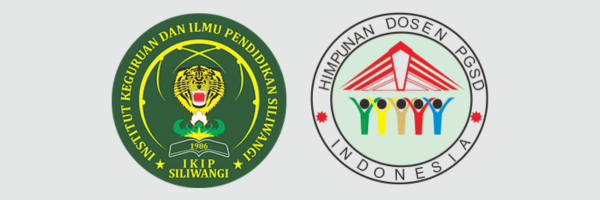Enhancing Collaboration Skills of Elementary Students through The Think-Pair-Share Model
DOI:
https://doi.org/10.22460/pej.v9i2.6471Kata Kunci:
TPS model , Collaboration skills, Elementary StudentsAbstrak
This study aims to improve students' collaboration skills using the Think-Pair-Share (TPS) learning model supported by digital media Canva and Wordwall. Background of this study is low low-ability collaborative student third grade at an elementary school in West Bandung Regency. Research use approach quantitative with pre-experimental one group pretest- posttest design. Subjects study consists of of 30 students, and data was collected through observation as well as analyzed using SPSS and Microsoft Excel. The research results show existence improvement significant on skills collaborative student after implementation of the IT- based TPS model. The average score before treatment is 49.03 and increasing to 86.03 after treatment, with N-Gain value of 0.73 which is included category high. Increase visible throughout indicator skills collaboration, including contribution, work same, solution problems, and evaluation performance group. The TPS learning strategy has been proven capable create atmosphere active, fun, and learning facilitate involvement student in a way emotional and social. In addition, this model give room for student For each other exchange ideas, build trust self, and develop a sense of responsibility answer together in a collaborative and meaningful learning process. This model also supports creation environment learn more participatory, interactive, and reinforcement - oriented skills important 21st century in general comprehensive and sustainable through innovation relevant modern learning.
Referensi
Aditya, U. B., & Wahyudi, W. (2024). Implementasi Teams Games Tournament Untuk Meningkatkan Keterampilan Kolaborasi Siswa Kelas Sekolah Dasar. Scholaria: Jurnal Pendidikan Dan Kebudayaan, 14(01), 88–97. https://doi.org/10.24246/j.js.2024.v14.i01.p88-97
Agustin, M., & Pratama, Y. A. (2021). Keterampilan Berpikir Dalam Konteks Pembelajaran Abad Ke-21 (F. A. Nurul, Ed.). PT Refika Aditama.
Alsmadi, M. A., Tabieh, A. A. S., Alsaifi, R. M., & Al-Nawaiseh, S. J. (2023). The Effect of the Collaborative Discussion Strategy Think-Pair-Share on Developing Students’ Skills in solving Engineering Mathematical Problems. European Journal of Educational Research, 12(2), 1123–1135. https://doi.org/10.12973/eu-jer.12.2.1123
Andriyani, N. B., Listyaningsih, & Estuningsih, K. (2025). Upaya Peningkatan Motivasi Belajar Mata Pelajaran Pendidikan Pancasila Kelas X-8 melalui Media Pembelajaran Interaktif Berbasis Canva dan Wordwall. J-CEKI: Jurnal Cendekia Ilmiah, 4(3), 122–130. https://doi.org/https://doi.org/10.56799/jceki.v4i3.7264
Bargmann, C., & Kauffeld, S. (2023). The interplay of time management and academic self-efficacy and their influence on pre-service teachers’ commitment in the first year in higher education. Higher Education, 86(6), 1507–1525. https://doi.org/10.1007/s10734-022-00983-w
Barokah, N., & Untung, S. (2024). Pemanfaatan Teknologi Digital untuk Meningkatkan Keterampilan Kolaborasi dan Komunikasi Siswa Sekolah Dasar. Jurnal Pendidikan Dan Bahasa, 1(4), 347–356. https://doi.org/https://doi.org/10.62383/dilan.v1i4.883
He, S., Shi, X., Choi, T.-H., & Zhai, J. (2023). How do students’roles in collaborative learning affect collaborative problem-solving competency? A systematic review of research. Thinking Skills and Creativity, 50, 101423. https://doi.org/10.1016/j.tsc.2023.101423
Huang, X., & Ochoa, X. (2025). Charting the Development of Collaboration Skills through Collaborative Learning Analytics Systems. Journal of Learning Analytics, 12(1), 338–366. https://doi.org/10.18608/jla.2025.8523
Kurniawan, A. A., Rahmawati, N. D., & Dian, K. (2024). Pengaruh Media Pembelajaran Interaktif Canva terhadap Hasil Belajar IPAS pada Peserta Didik Kelas IV Sekolah Dasar. Jurnal Inovasi, Evaluasi Dan Pengembangan Pembelajaran (JIEPP), 4(2), 179–187. https://doi.org/10.54371/jiepp.v4i2.466
Kusumawati, I., & Kristin, F. (2023). Peningkatan Keterampilan Kolaborasi Pada Mata Pelajaran Matematika Melalui Model Teams Games Tournament Di Kelas V Sekolah Dasar. PeTeKa (Jurnal Penelitian Tindakan Kelas Dan Pengembangan Pembelajaran), 6(4), 1050–1059. https://doi.org/http://dx.doi.org/10.31604/ptk.v6i4.1050-1059
Lestari, A. P., Lestari, D., Tunnisa, K., & Putri, Y. E. (2025). Penerapan Model Pembelajaran Kooperatif Tipe Think Pair Share (TPS) untuk Meningkatkan Keterampilan Sosial Siswa Madrasah Ibtidaiyah. Jurnal Pendidikan Tematik, 6(1), 79–82.
Marsela, M., Siti Nurfauzia Azaini, S., Siti Yuliyati, S., Ridwan Firmansyah, R., & Akmal Rizki Gunawan Hasibuan, A. (2024). Peningkatan Kualitas Pembelajaran Berpikir Kritis melalui Model Think Pair Share (TPS) dalam Perspektif Pendidikan Islam di Sekolah Dasar. Al-Mau’izhoh, 6(1), 789–805. https://doi.org/10.31949/am.v6i1.8690
Ni, L. (2022). Application of the Zone of Proximal Development in College English Teaching. Adult and Higher Education, 4(7), 49–54. https://doi.org/10.23977/aduhe.2022.040709
OECD. (2023). PISA 2022 Results Learning During – and From – Disruption (Volume II). In Factsheets: Vol. I. OECD. https://doi.org/10.1787/a97db61c-en
Pothou, E., Eliyahu-Levi, D., Sonbahar, B., & Ganz-Meishar, M. (2024). Navigating collaborative learning across national boundaries: a comparative study of educators’ perspectives in Israel and Turkey. Frontiers in Human Dynamics, 6(June), 1–8. https://doi.org/10.3389/fhumd.2024.1364693
Purnomo, W., Guilin, X., & Rahmadani Putri, L. (2024). The Effectiveness of Project-Based Learning in Improving Collaborative Skills of Elementary School Students. International Journal of Educatio Elementaria and Psychologia, 1(6), 294–304. https://doi.org/10.70177/ijeep.v1i6.1383
Putri, R. A., Supriatna, N., & Mulyasari, E. (2021). Penerapan Model Think Pair Share untuk Meningkatkan Keterampilan Kolaborasi Siswa Sekolah Dasar. Educare: Jurnal Pendidikan, 3(1), 45–58.
Rodriguez-Salvador, M., & Castillo-Valdez, P. F. (2023). Promoting Collaborative Learning in Students Soon to Graduate through a Teaching–Learning Model. Education Sciences, 13(10). https://doi.org/10.3390/educsci13100995
Safitri, E., & Tresnawati, R. (2020). The Effect Of Cooperative Learning Model Of Think Pair Share (TPS) To Learn Natural Science Students Grade V Elementary School. 24(1), 8564–8572.
Samaila, K., Tsong, C. K., Masood, M., & Bervell, B. (2024). Think-pair-share based flipped classroom: A model for improving students’ learning achievement and self-efficacy. Journal of Digital Educational Technology, 4(1), ep2410. https://doi.org/10.30935/jdet/14422
Suharti, P., Listiana, L., Daesusi, R., Sutarni, S., Rahmaniati, R., Zakaria, Y., & Nagy, E. K. (2024). Advancing Collaborative Competence: Instrumentation Development and Integration Strategies for Effective Learning. Indonesian Journal on Learning and Advanced Education (IJOLAE), 6(20), 137–155. https://doi.org/10.23917/ijolae.v6i1.23214
Sutopo, Setiadi, B. R., Nurtanto, M., Purnomo, S., Handoyono, N. A., & Johan, A. B. (2020). Enhancing Of Student Involvement and Collaboration Through Think-Pair-Share Model On Energy Conversion Learning. International Journal of Higher Education, 9(4), 199–205. https://doi.org/10.5430/ijhe.v9n4p199
Theabthueng, P., Khamsong, J., & Worapun, W. (2022). The Development of Grade 8 Student Analytical Thinking and Learning Achievement Using the Integrated Problem-Based Learning and Think-Pair-Share Technique. Journal of Educational Issues, 8(1), 420. https://doi.org/10.5296/jei.v8i1.19711
Utami, A. P., Putra, N. P., & Marliana, N. N. (2024). Penggunaan Multimedia Untuk Peningkatan Hasil Belajar Peserta Didik Pada Mata Pelajaran IPAS Di Kelas V SDN Pelandakan 2. Jurnal Pendidikan Sains Dan Teknologi Terapan, 01(03), 206–211.
Waruwu, M. (2024). Pendekatan Penelitian Kualitatif: Konsep, Prosedur, Kelebihan dan Peran di Bidang Pendidikan. Afeksi: Jurnal Penelitian Dan Evaluasi Pendidikan, 5(2), 198–211. https://doi.org/10.59698/afeksi.v5i2.236
Wulandari, S. (2022). Peningkatan Keterampilan Kolaborasi Siswa Sekolah Dasar melalui Penerapan Model Think Pair Share. Jurnal Inovasi Pembelajaran Sekolah Dasar, 5(2), 112–125.
Xiaojun, Z., Xinrui, K., & Xupeng, L. (2022). The Influence Of Learning Mode and Learning Sharing Behavior on The Synchronicity of Attention of Sharers and Learners. BMC Psychology, 10(1), 1–10. https://doi.org/10.1186/s40359-022-00871-z
Yotha, N., Wasinee Rungruang, W., & Pommarang, W. (2024). Exploring the Impact of the Integrated Think-Pair Share and Active Learning Management on Non-Credentialed Teacher Learning Assessment Competency. Higher Education Studies, 14(2), 100. https://doi.org/10.5539/hes.v14n2p100
Yulianti, Mustamiroh, Iksam, & Wahyuningsih, T. (2024). Pengembangan Media Interaktif Gamsuya Berbasis Wordwall dan Canva Mapel IPAS di SD. Jurnal Education and Development, 12(3), 381–388. https://doi.org/doi.org/10.37081/ed.v12i3.634
Unduhan
Diterbitkan
Terbitan
Bagian
Lisensi

Artikel ini berlisensiCreative Commons Attribution-ShareAlike 4.0 International License.
The author is responsible for acquiring the permission(s) to reproduce any copyrighted figures, tables, data, or text that are being used in the submitted paper. Authors should note that text quotations of more than 250 words from a published or copyrighted work will require grant of permission from the original publisher to reprint. The written permission letter(s) must be submitted together with the manuscript.











